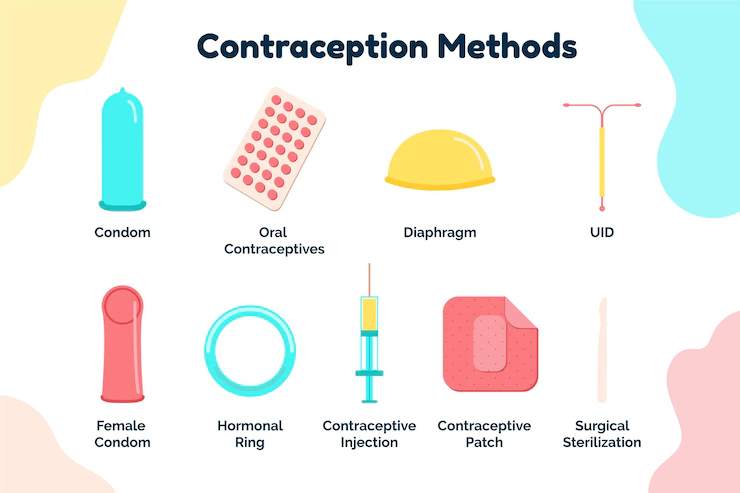Contraception plays a crucial role in preventing unintended pregnancies and promoting sexual health. While condoms are a widely used and effective method of contraception, some individuals may choose to combine them with other forms of birth control for added protection. In this article, we will explore the compatibility of condoms with various forms of contraception and discuss the benefits of using multiple methods for dual protection.
Understanding Condom Compatibility:
Condoms are barrier methods of contraception that provide a physical barrier between the penis and the vagina, preventing sperm from reaching the egg and reducing the risk of sexually transmitted infections (STIs). They are readily available, easy to use, and have high efficacy rates when used consistently and correctly. However, using condoms alone does not provide protection against all forms of contraception.
Combining Condoms with Other Forms of Contraception:
- Hormonal methods: Condoms can be used in combination with hormonal methods such as birth control pills, patches, or hormonal intrauterine devices (IUDs). This combination offers both protection against pregnancy and STIs. Combining condoms with hormonal methods provides an extra layer of protection and can be especially useful in situations where the effectiveness of hormonal methods may be compromised (e.g., missed pills, antibiotic use).
- Barrier methods: While condoms are a form of barrier contraception themselves, they can also be used alongside other barrier methods such as diaphragms or cervical caps. This dual approach enhances protection by adding an extra layer of physical barrier against sperm.
- Long-acting reversible contraceptives (LARCs): LARCs, such as hormonal implants or intrauterine devices (IUDs), are highly effective methods of contraception that provide long-term protection against pregnancy. Condoms can be used alongside LARCs to provide additional protection against STIs.
- Emergency contraception: Condoms should still be used as a form of contraception even when emergency contraception is used. Emergency contraception is intended for use in emergencies, such as contraceptive failure or unprotected intercourse, but it does not protect against future instances of sexual activity or STIs.
The Benefits of Dual Protection:
Using condoms in combination with other forms of contraception offers several benefits:
- Increased pregnancy prevention: Combining methods of contraception improves overall effectiveness in preventing unintended pregnancies. Condoms provide an additional layer of protection, reducing the risk even further.
- Protection against STIs: Condoms are the only form of contraception that provides significant protection against most STIs. Using condoms alongside other methods ensures protection against both unintended pregnancies and STIs.
- Reducing concerns about method failure: Combining methods provides peace of mind and reduces worries about the failure of a single method. It can alleviate anxieties about contraceptive mishaps and increase confidence in sexual health practices.
- Flexibility and versatility: Combining contraception methods allows individuals to choose the approach that best fits their needs, preferences, and lifestyle. It provides the opportunity to tailor contraceptive choices to specific circumstances and sexual encounters.
Remember, while combining methods of contraception can enhance protection, it’s essential to use each method consistently and correctly. Proper condom use, such as checking the expiration date, using adequate lubrication, and ensuring the condom is undamaged, is crucial to maximize effectiveness.
It’s also important to consult with a healthcare professional to discuss the compatibility and potential interactions between different contraceptive methods. They can provide personalized advice based on your unique circumstances and help you make informed decisions about dual protection.
In conclusion, combining condoms with other forms of contraception can provide an extra layer of protection against unintended pregnancies and STIs. It offers increased peace of mind, flexibility, and overall sexual health benefits. Remember, no method of contraception is 100% foolproof, but by using multiple methods, you can significantly reduce the risk of unintended pregnancies and protect your sexual well-being.
Disclaimer: This article is for informational purposes only and is not intended to replace professional medical advice. Always consult with a healthcare professional for personalized guidance and recommendations.










